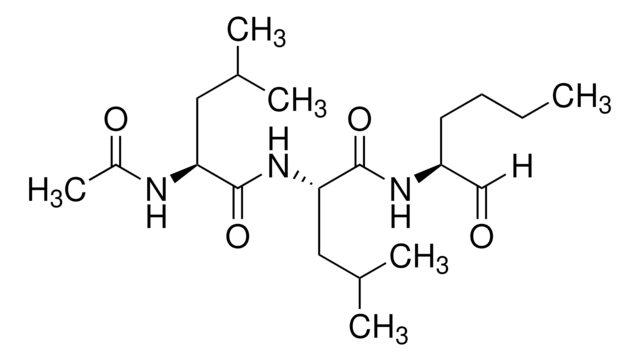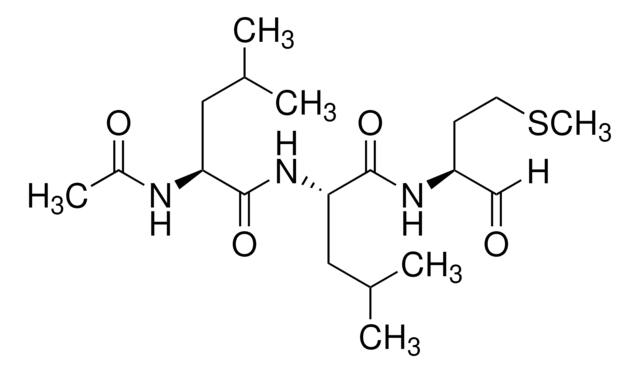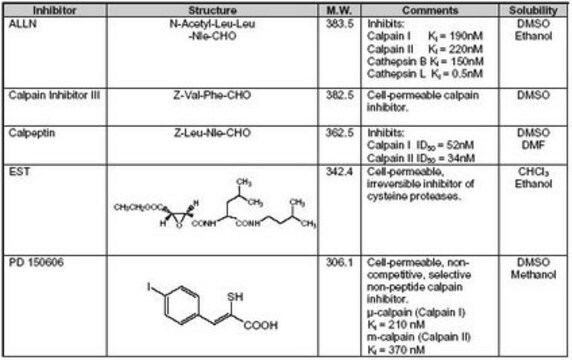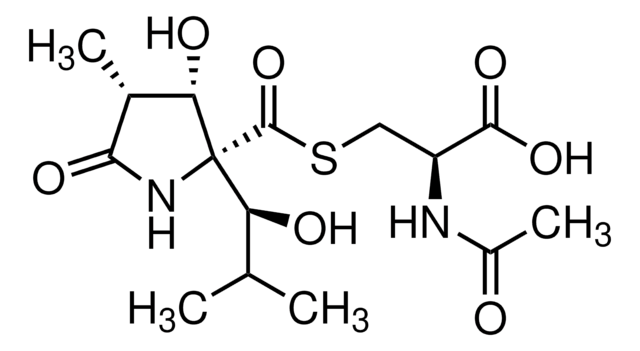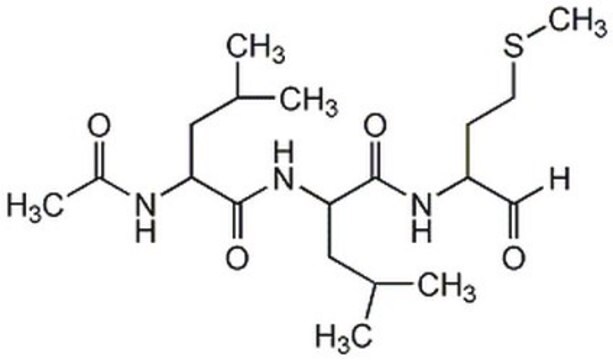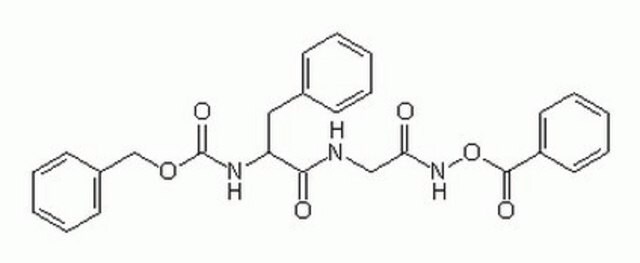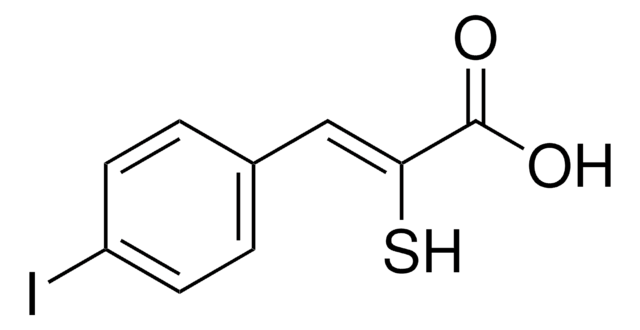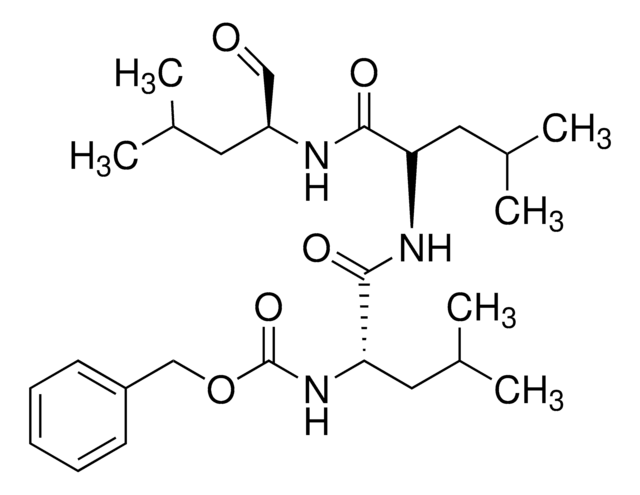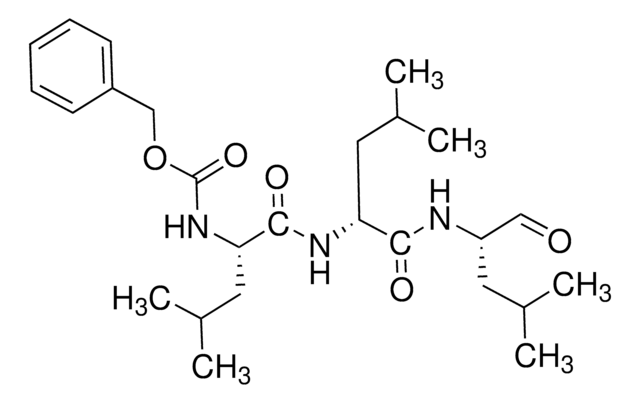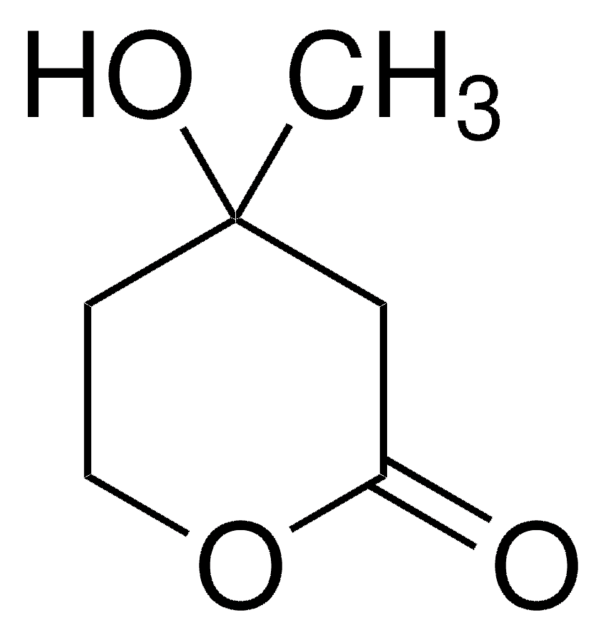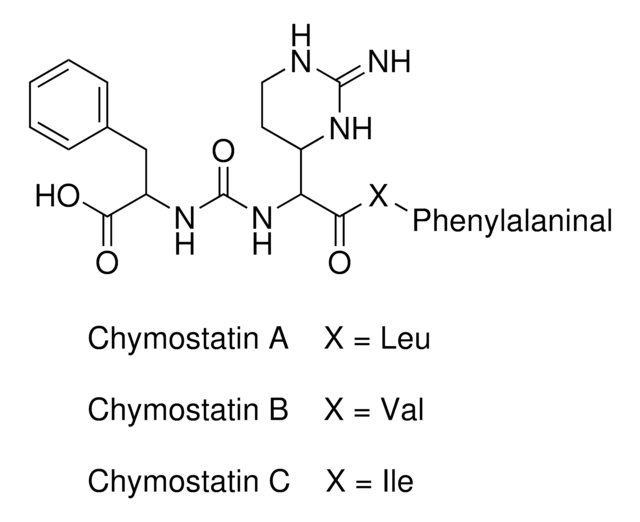208719
ALLN
≥95% (HPLC), solid, calpain inhibitor, Calbiochem®
Synonyme(s) :
ALLN, LLNL, MG 101, Calpain Inhibitor I, Proteasome Inhibitor V
About This Item
Produits recommandés
product name
ALLN, Cell-permeable inhibitor of calpain I (Ki = 190 nM), calpain II (Ki = 220 nM), cathepsin B (Ki = 150 nM), and cathepsin L (Ki = 500 pM).
Niveau de qualité
Pureté
≥95% (HPLC)
Forme
solid
Fabricant/nom de marque
Calbiochem®
Conditions de stockage
OK to freeze
Couleur
white to off-white
Solubilité
DMSO: 10 mg/mL
ethanol: 5 mg/mL
Conditions d'expédition
ambient
Température de stockage
2-8°C
InChI
1S/C20H37N3O4/c1-7-8-9-16(12-24)22-19(26)18(11-14(4)5)23-20(27)17(10-13(2)3)21-15(6)25/h12-14,16-18H,7-11H2,1-6H3,(H,21,25)(H,22,26)(H,23,27)/t16-,17-,18-/m0/s1
Clé InChI
FMYKJLXRRQTBOR-BZSNNMDCSA-N
Description générale
Actions biochimiques/physiologiques
Calpain-1
Avertissement
Séquence
Reconstitution
Autres remarques
Zhang, L., et al. 1999. J. Biol. Chem.274, 8966.
Milligan, S.A., et al. 1996. Arch. Biochem. Biophys. 335, 388.
Griscavage, J.M., et al. 1995. Biochem. Biophys. Res. Commun. 215, 721.
Squier, M.K., et al. 1994. J. Cell Physiol.159, 229.
Rami, J., and Kreiglstein, J. 1993. Brain Res.609, 67.
Sherwood, S.W., et al. 1993. Proc. Natl. Acad. Sci.USA90, 3353.
Vinitsky, A., et al. 1992. Biochemistry31, 9421.
Sasaki, T., et al. 1990. J. Enzyme Inhib. 3, 195.
Informations légales
Code de la classe de stockage
11 - Combustible Solids
Classe de danger pour l'eau (WGK)
WGK 3
Point d'éclair (°F)
Not applicable
Point d'éclair (°C)
Not applicable
Certificats d'analyse (COA)
Recherchez un Certificats d'analyse (COA) en saisissant le numéro de lot du produit. Les numéros de lot figurent sur l'étiquette du produit après les mots "Lot" ou "Batch".
Déjà en possession de ce produit ?
Retrouvez la documentation relative aux produits que vous avez récemment achetés dans la Bibliothèque de documents.
Les clients ont également consulté
Notre équipe de scientifiques dispose d'une expérience dans tous les secteurs de la recherche, notamment en sciences de la vie, science des matériaux, synthèse chimique, chromatographie, analyse et dans de nombreux autres domaines..
Contacter notre Service technique